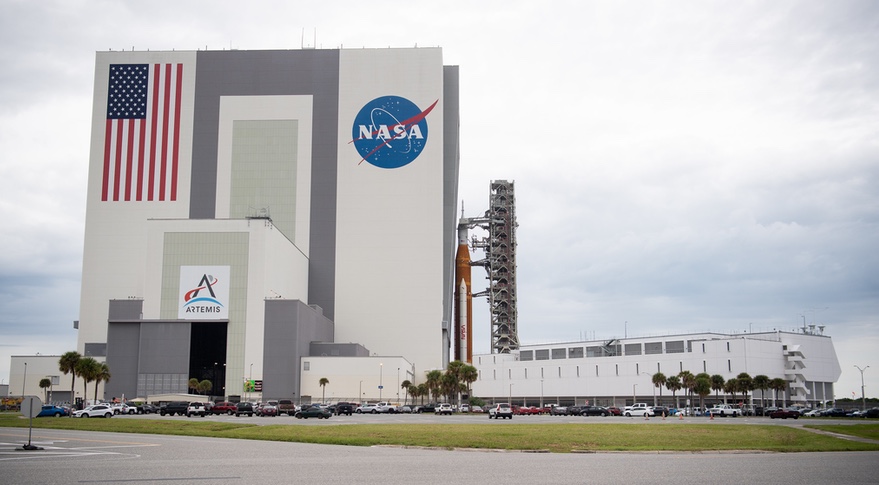KAHULUI, Hawaii — With the Space Launch System now safely back inside the Vehicle Assembly Building ahead of Hurricane Ian, NASA is now studying what work to do on the rocket to prepare for a next launch attempt unlikely to occur before mid-November.
The SLS and Orion spacecraft arrived back in the VAB at 9:15 a.m. Eastern Sept. 27, about 10 hours after departing Launch Complex 39B. NASA decided Sept. 26 to roll the vehicle back to the VAB given forecasts of high winds at the Kennedy Space Center later this week from Hurricane Ian.
The agency is now planning work to perform on the SLS while in the VAB, starting with replacing batteries for the rocket’s flight termination system (FTS). The core stage FTS batteries are located in the intertank section between the rocket’s liquid hydrogen and liquid oxygen stages, and can only be accessed while in the VAB.
“Getting into some of these volumes is difficult,” said Jim Free, NASA associate administrator for exploration systems development, in a Sept. 27 call with reporters. “The FTS changeout is not simple.”
That alone, he suggested, would make it difficult to get the vehicle ready for the next launch period, which runs from Oct. 17 through 31. “I don’t think we’re going to take anything off the table,” he said when asked if an October launch was still feasible. “I also recognize it’s Sept. 27 and getting back out to the pad and trying to get there may be a challenge.”
That work, Free added, is unlikely to start before next week because of hurricane preparations at KSC. “We don’t want to go out too fast,” he said, and overlook other work on the vehicle.
That other work includes assessing any “limited life” items on the vehicle that may need to be replaced or serviced. Those items include other batteries on the vehicle, storage of hypergolic propellants on the Orion service module as well as its “soft goods” like seals. Free added NASA would also work with United Launch Alliance on examining any components on the Interim Cryogenic Propulsion Stage that may need work.
The work the FTS batteries will reset its certification by the Eastern Range, which was originally set for 25 days. NASA obtained a waiver last week from the U.S. Space Force, which operates the range, that effectively more than doubled that lifetime to allow for launch attempts as late as Oct. 2. However, Free said that despite the waiver, his assumption was that the FTS certification reverted to the original 25 days once the batteries are serviced.
There are also long-term issues with the vehicle, which was fully stacked last fall and has remained in that configuration much longer than originally expected. “The team evolved their thinking” about limited-life items over the last several months, he said. “The analysis we’re doing to clear ourselves and get comfortable with the limited-life items are a function of the hardware itself but also the duration it’s been stacked.”
If the Artemis 1 launch does slip to November, there are launch opportunities from Nov. 12 to Nov. 27. More than half take place in the middle of the night. Free said it’s NASA’s preference to conduct the inaugural SLS launch during the day for improved tracking. “I think we’ll look at the risk-versus-benefit trade,” he said. “Our preference is probably a daylight launch, but we won’t rule out a nighttime launch, either.”
NASA also had to deal with a fire reported in the VAB about two and a half hours after the SLS arrived back in the building. The minor fire did not result in any injuries or major damage. Janet Petro, director of KSC, said on the call than a 40-volt electrical panel caught fire on a wall in a high bay in the building, a “good distance” from the SLS. Personnel were briefly evacuated from the building, but had returned by the time she spoke to reporters.
“I don’t know if I can speculate any more on what caused the fire,” she said. “There was nothing close to the vehicle. The vehicle was never at risk.”
In a statement late Sept. 27, NASA said a spark from an “arc flash event” on an electrical panel fell on a rope and caused it to smolder, triggering a fire alarm. The agency emphasized that neither the SLS or Orion were at risk from the fire.
